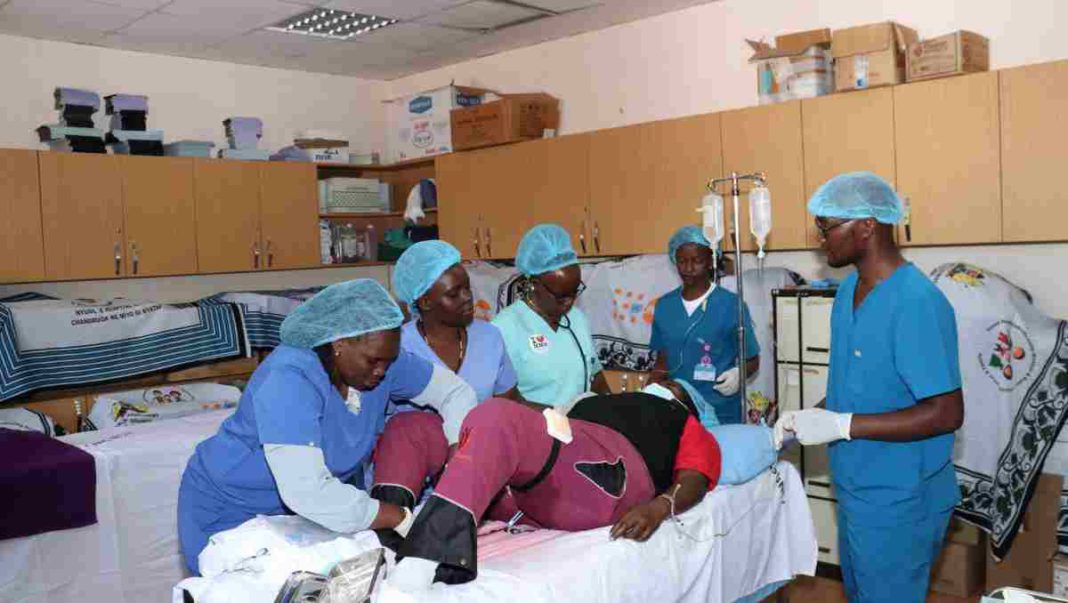KENYA: In the bustling maternity wing of Migori County Hospital, amidst the flurry of activity as nurses attend to expectant and new mothers, a significant change is underway. Veronica Awuor, a 24-year-old first-time mother, cradles her newborn with a sense of fulfillment. Her positive experience can be attributed to the skilled midwife who professionally guided her through childbirth, dispelling any apprehensions she had.
“My experience was very adventurous and it was fulfilling. It was my first time and I got very good service. The nurses were very professional from the start, checking me every four hours from the time I arrived until I delivered at 10 am this morning,” Awuor says.
However, Kenya grapples with a serious scarcity of midwives, hindering progress in reducing maternal mortality. Despite significant efforts to curb this issue, Kenya’s maternal mortality rate remains at 355 per 100,000 live births, as per the 2019 census. To address this challenge, the World Health Organization (WHO) recommends a ratio of one midwife for every two mothers.
The ambitious target for Kenya is to lower the maternal mortality rate to 150 by 2030, aligned with the United Nations’ Sustainable Development Goal (SDG) number 3 on health, which aims for a global rate of 70 per 100,000 live births. However, the shortage of midwives remains a formidable obstacle.
In Migori County, a shortage of midwives and essential equipment contributes to maternal deaths, which reached 445 per 100,000 live births during the 2019 national census. The county government of Migori, in collaboration with partners, has undertaken initiatives to address this gap. A skills lab has been established to train healthcare professionals, including midwives, equipping them with essential skills to safeguard maternal lives.
Despite these efforts, challenges persist. For instance, Migori County Hospital’s maternity wing records an average of 130-140 deliveries per month, significantly exceeding the number of trained midwives available. A similar scenario unfolds in Homa Bay County, where Mafangano Island grapples with limited resources. A single trained midwife and nurse often navigate challenging circumstances to provide care to mothers in need.
Kenya faces a severe shortage, with only 11 midwives per 10,000 people, far below the WHO recommendation of 22 per 10,000. The existing deficit necessitates legislation aimed at increasing midwife deployment in hospitals across the nation. Although medical colleges in Kenya now include midwifery training, the shortage persists due to a lack of proper deployment strategies.
“The country looks like we have an over-supply. Many are even going out of the country. It is the issue of deployment, so that you have many concentrating in the urban areas, and less in the rural areas. Nairobi has got maybe 70% of the human resource for health that the country may want. In terms of numbers, the government mentioned recently that in its budget for health, 80% goes to the remuneration of staff, leaving 20% to be used for any development. But I know if we budget properly to save lives, we can,” Dr. Okoro said.
The legislation to enhance midwife deployment holds the potential to revolutionize maternal care in Kenya, ensuring that every mother receives competent and timely assistance during childbirth. By addressing the shortage of midwives and strategically deploying them, Kenya can inch closer to its maternal mortality reduction goals and create a safer environment for mothers across the country.
Also Read: Deaths from pregnancy complications rise in Niger



